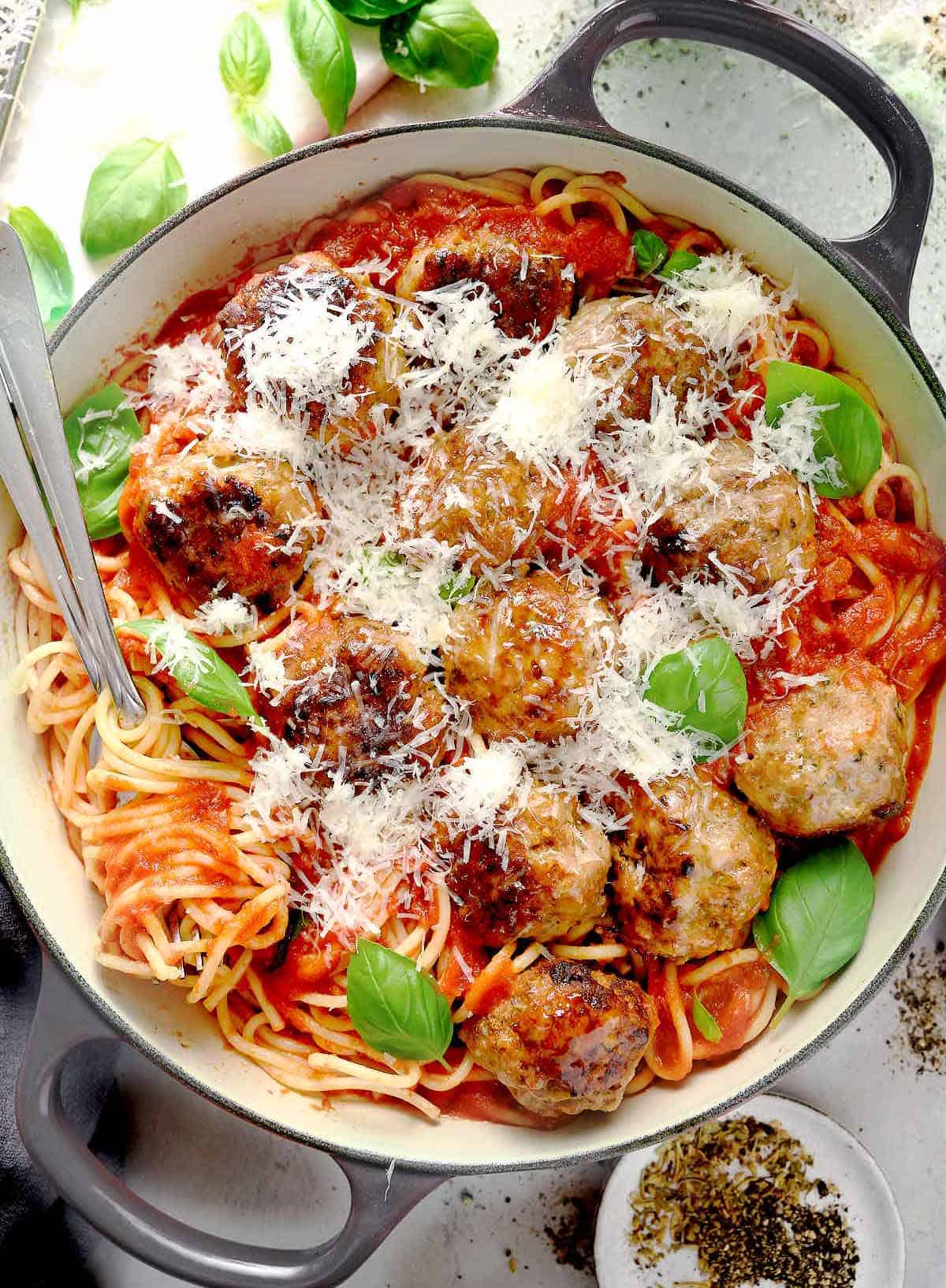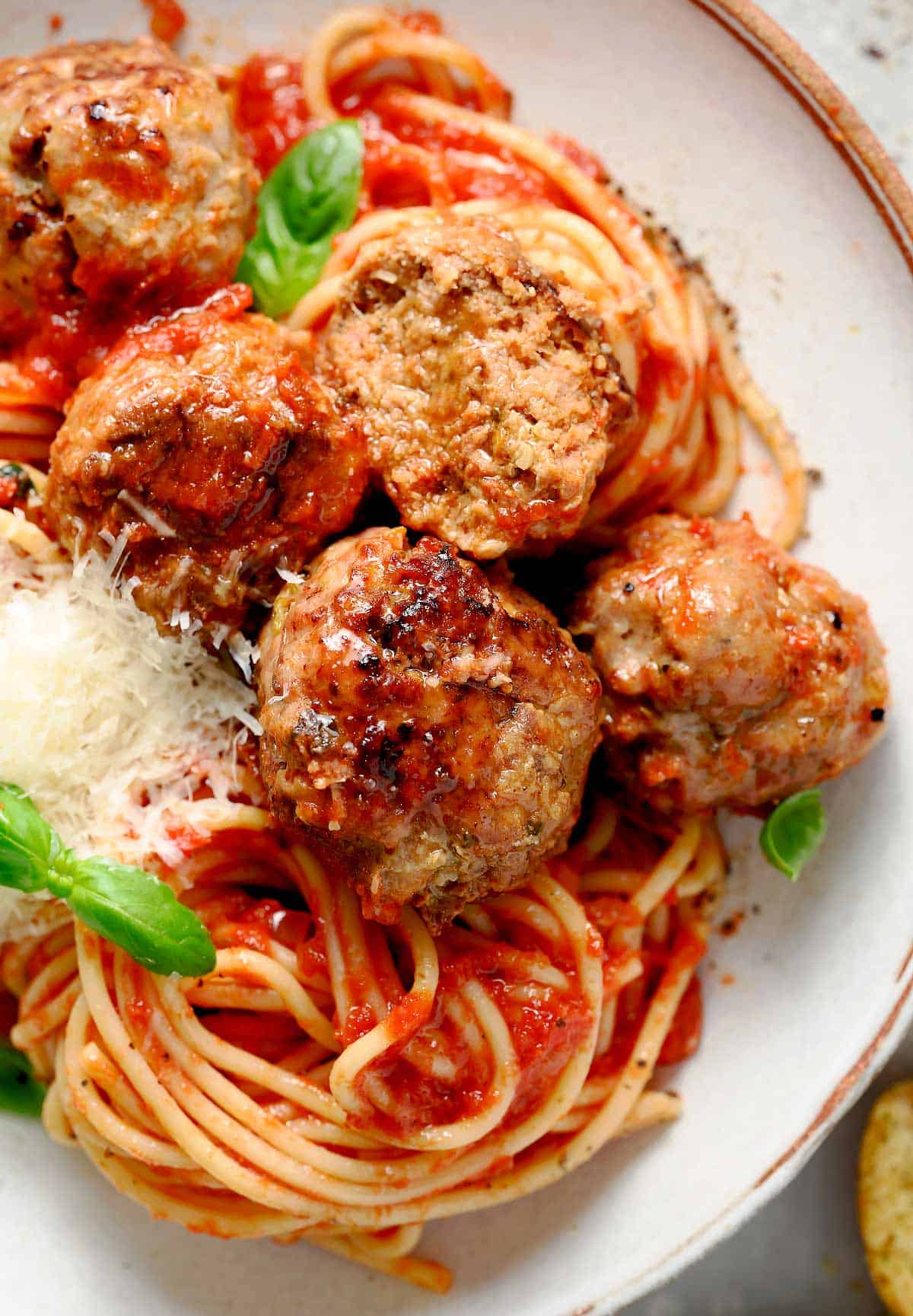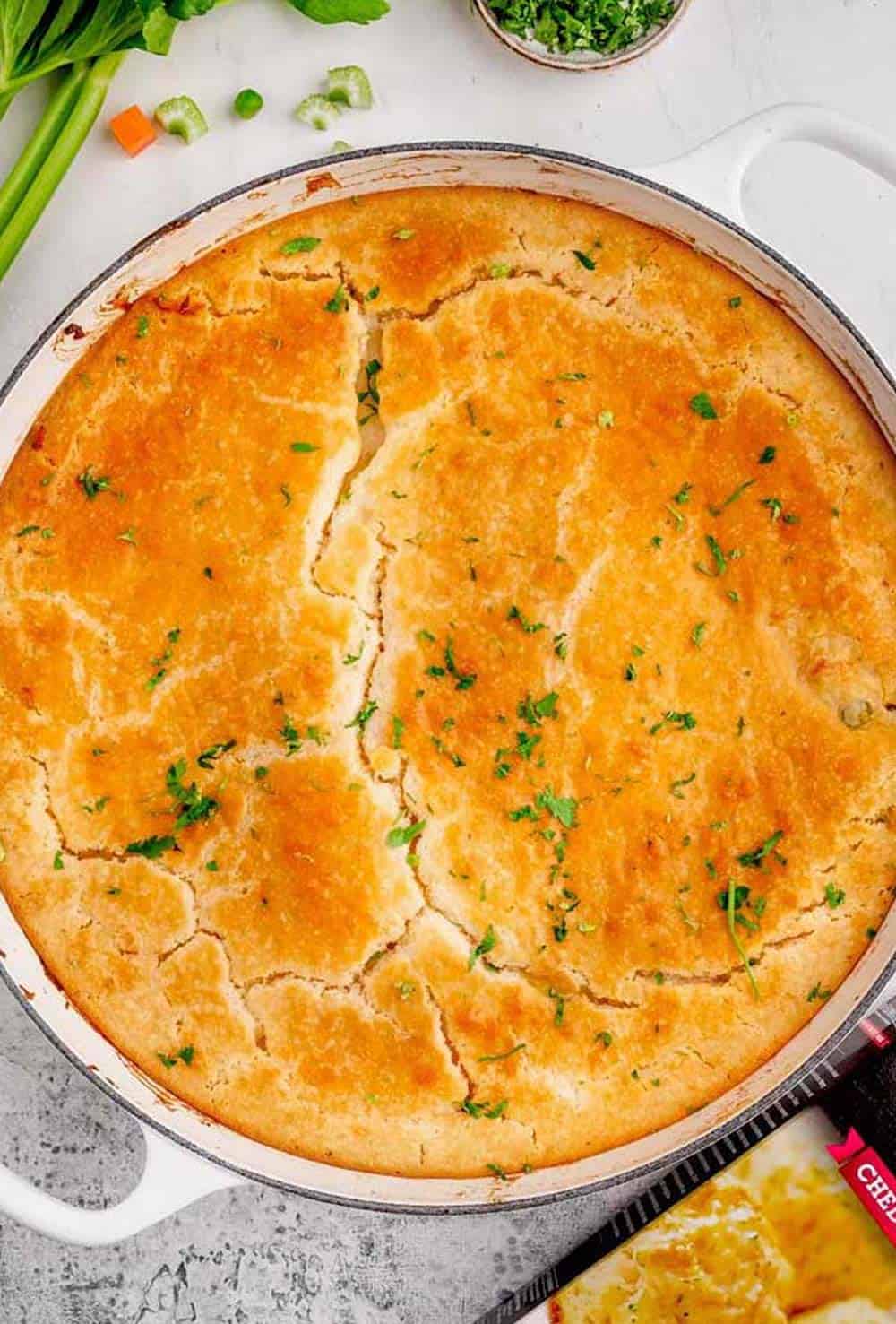It’s the age-old conundrum. You’ve made tender, juicy meatballs, swimming in a delicious, rich red sauce, and your spaghetti is pure al dente perfection. But alas, true to Italian tradition, you’ve made too much for one meal! Or maybe you’re very prepared and you’ve made your meatballs long before you want to eat them. So you begin to wonder… can you freeze spaghetti and meatballs?

Freezing Spaghetti and Meatballs
The simple answer is, yes, you can freeze your spaghetti and meatballs. In fact, you can freeze the dinner for up to six months! Pretty much all components to this dish freeze very well. In fact, real Italian tomato sauce is a classic freezer option. Many nonnas over the years make their sauce in massive quantities, storing litres of the good stuff in their freezer, typically in an ice cream container.
Really, the most important thing when freezing spaghetti and meatballs is to use a quality storage container. This will protect your food from the harsh conditions of the freezer.
We’ve written a handy guide to freezing spaghetti and meatballs here, with some handy hints for you to follow and make sure your food is just as good - if not better - after you’re frozen it.
How to Freeze Spaghetti and Meatballs
The size of your meatballs may vary from one dinner to the next. That’s OK, but the size of your meatballs will affect how you freeze them. If you’re using extremely large meatballs, you’ll need to cut them into smaller chunks to make freezing and subsequent thawing and reheating easier.
Our first quick tip for this freezing process is for those of you making your spaghetti and meatballs well in advance. If you’re making spaghetti in advance and you intend to freeze it, slightly undercook your spaghetti. It will help them freeze better, and they will absorb some moisture in the freezer, so when you reheat them they’ll be perfectly cooked!

Here’s our guide to freezing spaghetti and meatballs from leftovers, however, that is when you’ve simply made more than you can eat.
- First of all, you’ll want to let your spaghetti and meatballs cool down to room temperature. This will allow for even freezing all the way through. It’s not unlike how it’s best to let steak get to room temperature before cooking. Drastic temperature changes are hard on food, but if you can make the change less drastic, it will be in turn less harsh on the dinner.
- Once your spaghetti and meatballs have cooled down, you can spoon it all into a heavy-duty container or a freezer bag. We recommend a freezer bag as it will save on freezer space. The bag is also useful because the powerful red pigment in your sauce won’t stain an otherwise pristine container! However, if you’re not worried about that, and space isn’t at a premium, then definitely use a container.
- Remember that as your sauce freezes it will expand, so leave about an inch of room between the sauce and the container lid so it doesn’t explode out of your container.
- Next, remove any excess air and seal your packaging.
- Now another tip… label and date the packaging. You’d be surprised how easy it is to forget about frozen meals, even ones as delicious and heartwarming as this. It’s also hard to recognize frozen food for what it is sometimes, so this saves you twice the effort.
The spaghetti and meatballs will keep in the freezer for up to six months, but we strongly encourage you to eat it long before that time is up.
Related Questions
Can You Freeze Spaghetti By Itself?
Of course! Spaghetti freezes very well thanks to its high starch and water content. In fact, it’s common in many restaurants to freeze even handmade fresh pasta if there’s any left at the end of the day. Pasta on its own typically will keep in the freezer for up to three months. The best thing is that once you’re ready to eat your frozen pasta, you reheat it the same way as you cook it in advance… by boiling! For this reason, pasta from the freezer often tastes similar, if not identical, to pasta boiled straight out of the packet.
Should I Package the Pasta and the Sauce Separately?
You can definitely keep your pasta and sauce stored separately. This is particularly useful if you have a huge quantity of spaghetti and meatballs to store, as you might not have a container big enough for all of it.
Consider that you probably prepare the spaghetti and meatballs separately, combining them only when it’s time to serve. That same principle applies to frozen spaghetti and meatballs, too.
Reheating Frozen Spaghetti and Meatballs
First, you’ll want to let the spaghetti and meatballs thaw in the fridge for a couple of hours before cooking, if not overnight. If you’re storing your sauce and your spaghetti separately, you can keep the spaghetti in the freezer while the sauce is thawing out. It can go into a pot of boiling water pretty much straight out of the freezer, which is very convenient.
You can reheat your thawed sauce on low-medium heat in a thick-bottomed pan or pot over the stovetop, put it in the oven, or even use a microwave. Of these, the stovetop is usually the most efficient as long as you stir the sauce as you go to make sure it reheats evenly. On the stovetop, covering the pot with a lid will help trap heat in the pot, allowing heat to penetrate your reheating meatballs and sauce from all sides.
❗Low and slow, as with many pasta sauces, is the best way to bring your meatballs and sauce to life from the freezer. Try these tips out and let us know what you think!

If you found this cooking resource helpful be sure to leave a comment or give this recipe a rating ⭐⭐⭐⭐⭐! I will be happy to hear from you!
Other Cooking Resources
How to thicken spaghetti sauce
The best method to peel garlic
4 Easy ways to reheat meatloaf
Like spaghetti? Try these recipes!
Spaghetti and meatballs recipe





Leave a Reply